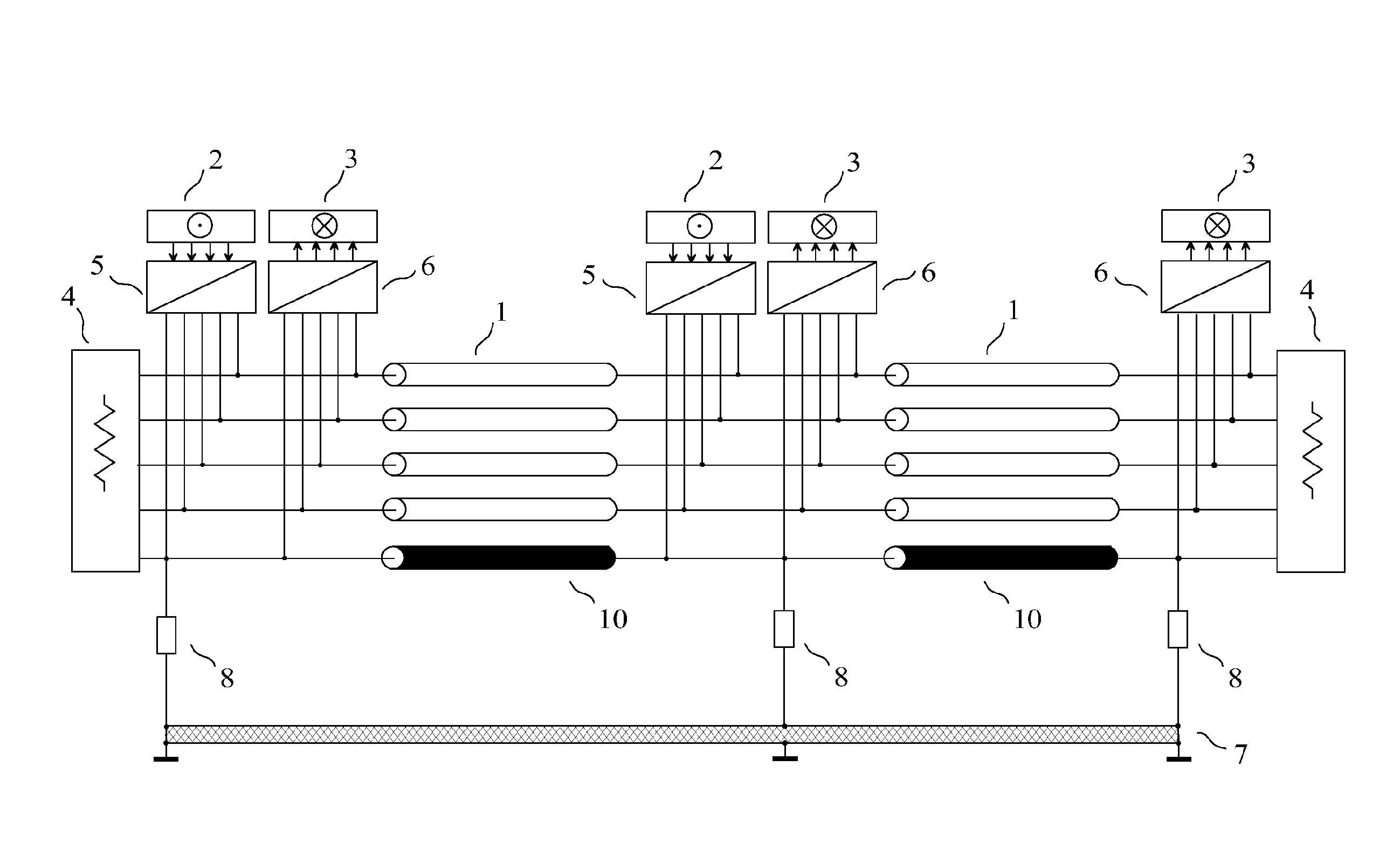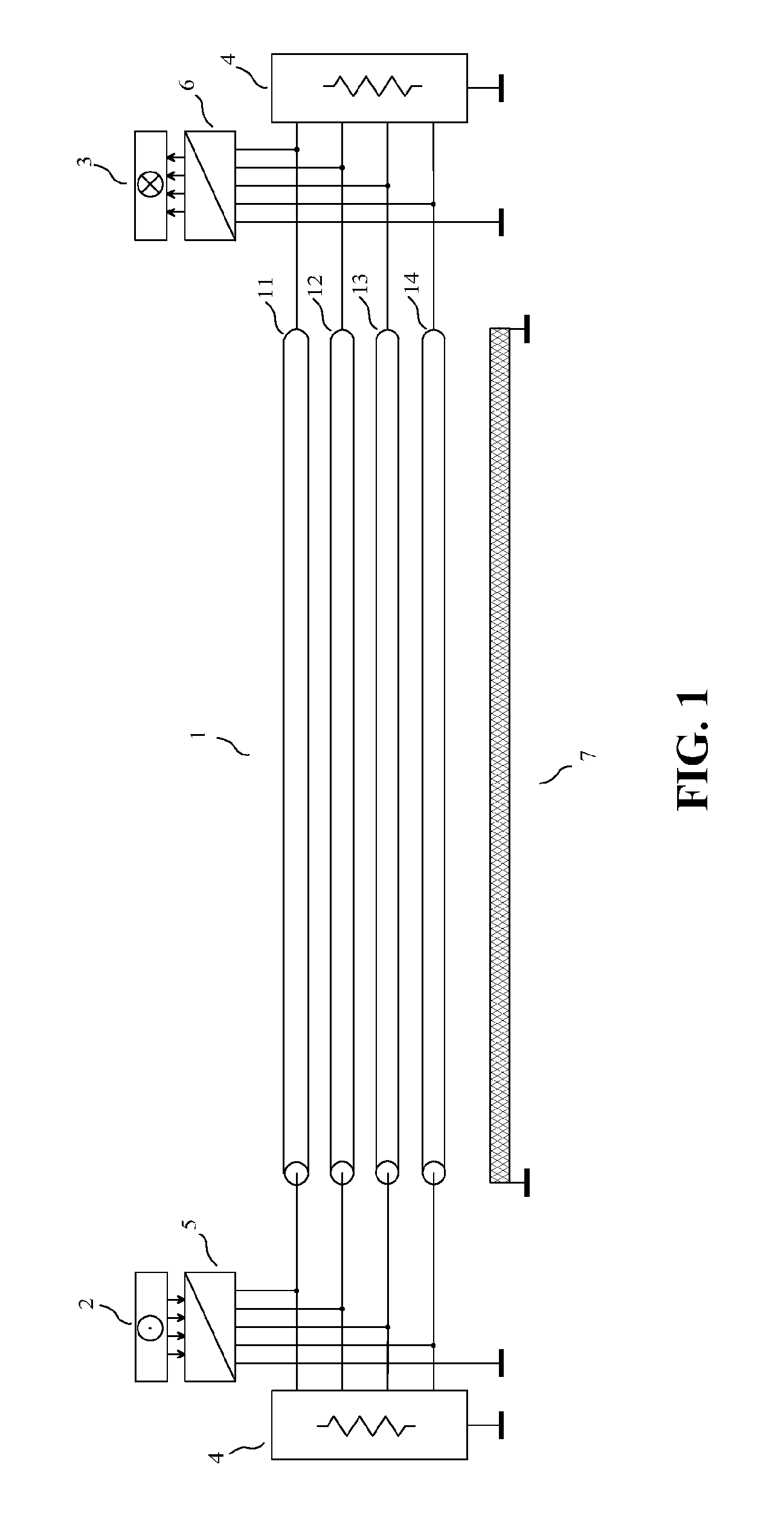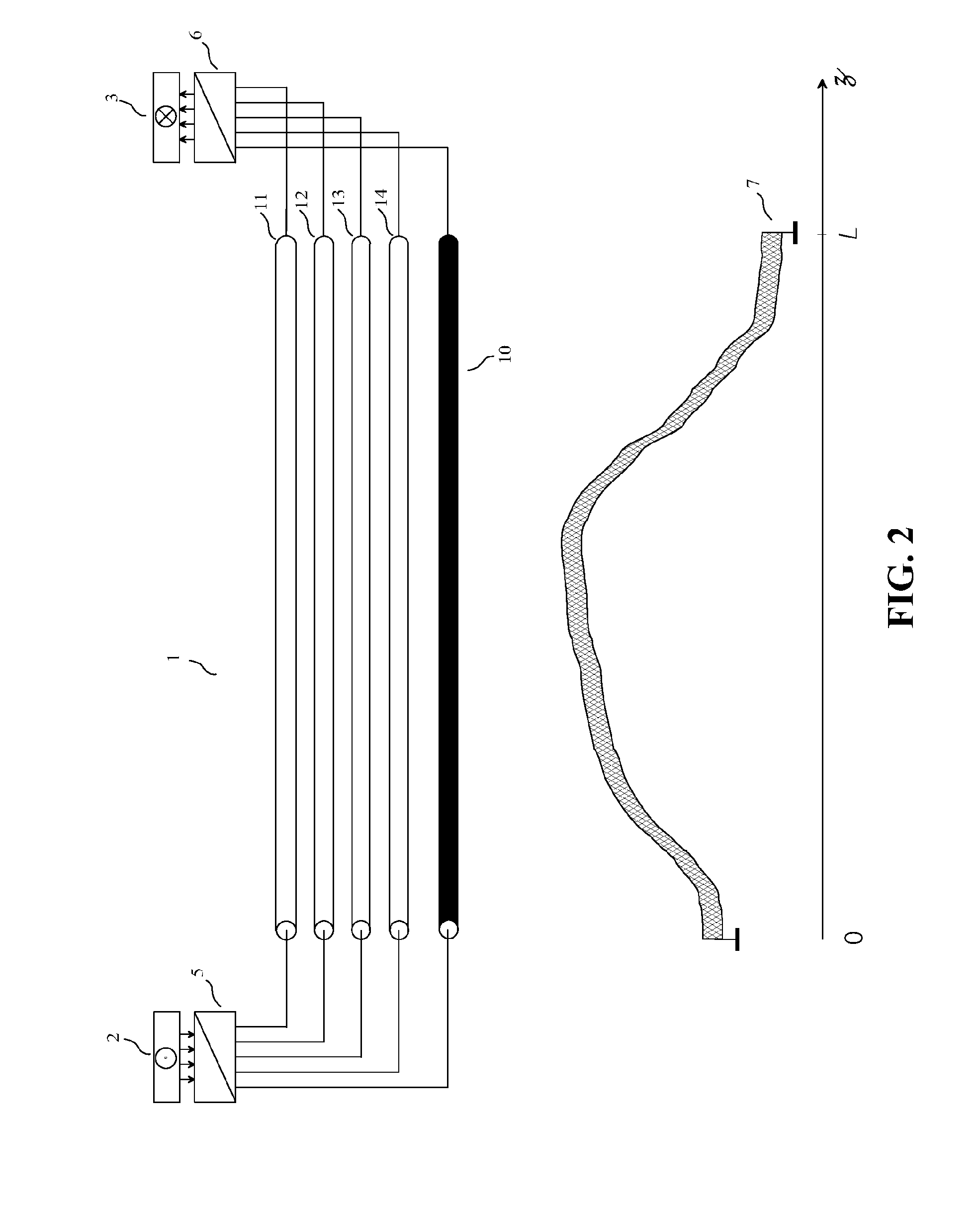Method and device for pseudo-differential transmission
a transmission method and transmission method technology, applied in the direction of waveguide type devices, orthogonal pcbs mounting, digital transmission, etc., can solve the problems of scheme being vulnerable to external crosstalk, method subject to two detrimental phenomena, and noise generation
- Summary
- Abstract
- Description
- Claims
- Application Information
AI Technical Summary
Benefits of technology
Problems solved by technology
Method used
Image
Examples
first embodiment
[0125]As a first embodiment of a device for implementing the method of the invention, given by way of non-limiting example, we have represented in FIG. 7 a device of the invention comprising an interconnection (1) having n=4 transmission conductors (11) (12) (13) (14) and a return conductor (10) distinct from the reference conductor (7). The two termination circuits (4) are connected to the conductors (10) (11) (12) (13) (14) of the interconnection (1), the impedance matrix of each termination circuit with respect to the return conductor being approximately equal, in a part of a known frequency band used for transmission, to a diagonal matrix of size n×n minimizing a matrix norm of the matrix of the voltage reflection coefficients of the termination circuit with respect to the return conductor. The transmitting circuit (5) receives at its input the signals of the 4 channels of the source (2), and its n+1=5 output terminals are connected to the conductors (10) (11) (12) (13) (14) of ...
second embodiment
[0147]The second embodiment of a device for implementing the method of the invention, given by way of non-limiting example, also corresponds to the device of the invention shown in FIG. 7, and the explanations relating to FIG. 7 given in the presentation of the first embodiment are applicable to this second embodiment, except that, in this second embodiment, the transmitting circuit (5) is a “Pseudo-differential interfacing device having a balancing circuit” according to said French patent application Ser. No. 07 / 04889 and international application number PCT / IB2008 / 051942, which produces natural voltages referenced to the return conductor at its output (the transmission variables are therefore natural voltages referenced to the return conductor), each of these natural voltages referenced to the return conductor being mainly determined by the signal of only one channel of the source (2). The FIG. 8 is not applicable to this second embodiment.
[0148]The interconnection (1) is built in...
third embodiment
Best Mode
[0160]As a third embodiment of a device for implementing the method of the invention, given by way of non-limiting example and best mode of carrying out the invention, we have represented in FIG. 10 a device of the invention comprising an interconnection (1) having n=3 transmission conductors (11) (12) (13) and a return conductor (10) distinct from the reference conductor (7). A termination circuit (4) is connected to the conductors of the interconnection (1), the impedance matrix of the termination circuit with respect to the return conductor being, in a part of the frequency band used for transmission, approximately equal to a diagonal matrix of size n×n such that all components of the matrix of the voltage reflection coefficients of the termination circuit with respect to the return conductor have an absolute value less than or equal to 1 / 10. The transmitting circuit (5) receives at its input the signals of the 3 channels of the source (2), and its 4 output terminals are...
PUM
 Login to View More
Login to View More Abstract
Description
Claims
Application Information
 Login to View More
Login to View More - R&D
- Intellectual Property
- Life Sciences
- Materials
- Tech Scout
- Unparalleled Data Quality
- Higher Quality Content
- 60% Fewer Hallucinations
Browse by: Latest US Patents, China's latest patents, Technical Efficacy Thesaurus, Application Domain, Technology Topic, Popular Technical Reports.
© 2025 PatSnap. All rights reserved.Legal|Privacy policy|Modern Slavery Act Transparency Statement|Sitemap|About US| Contact US: help@patsnap.com



